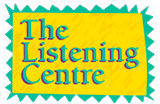Program for Children
Receptive Phase
The first phase works primarily on receptive listening, which is the first stage of communication. While listening, the child can play with other children in the room, draw, paint or even sleep because it is not necessary to concentrate on the sound stimulation. A specially trained Listening Therapist is in the room guiding the children and facilitating socialization.
Expressive Phase
During the second phase, the emphasis is on expressive listening, or in other words, on the auditory control of the voice. Children are invited to sing, speak, repeat words and sentences or read into a microphone while their voice is fed back to their ears once it has been electronically modified. When children are unable to participate in structured voice exercise, a microphone is placed in the room so that it picks up and emphasizes their attempts at vocalizing. The Listening Therapist monitors and encourages them with audio vocal exercises.
Younger Children
Younger children and those with developmental delays, sensory regulation or/and communication disorders including Autism do their listening training in a ‘sensory room’. This is a specially designed playroom where Listening Therapists implement various sensory integration techniques. Since communication, language and learning require harmonization of all sensory modalities. For instance, they work on the tactile sense through informal play while using hand cream, massaging toys and different textured fabrics; they use mirrors to trigger visual-spatial responses: they play with the rhythm of the music on swings, hammocks, trampoline and balance boards to enhance the vestibular-proprioceptive functions. When used in conjunction with sound stimulation, such a “sensory diet” increases the child’s sense of self, which is at the start of the sense of others.
Monitoring the Program
A Listening Consultant monitors the program and provides guidance to the parents and recommends exercises such as daily reading out loud to consolidate the results. Following the program, reviews with the Consultant are planned to insure the permanence of the changes and, if necessary, to recommend reinforcement “boosts”
In some situations and in discussion with the consultant some parts of the program or the follow up boosts can be done at home under the supervision of the centre's staff.
 Skip Navigation
Skip Navigation